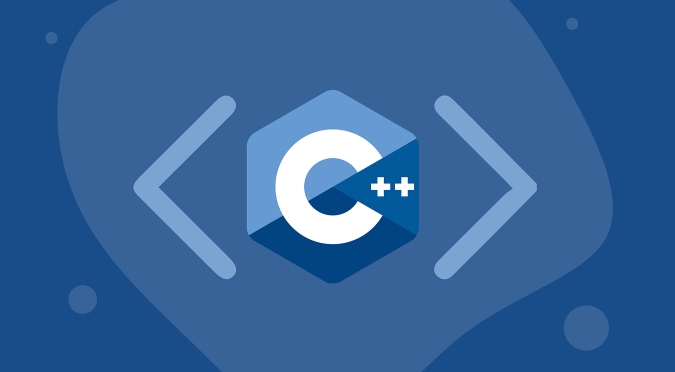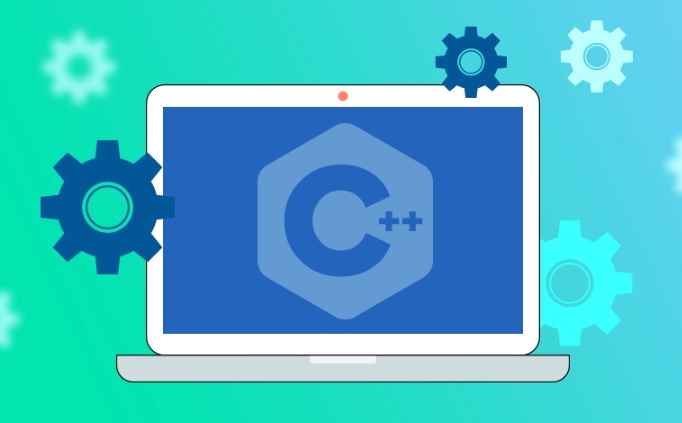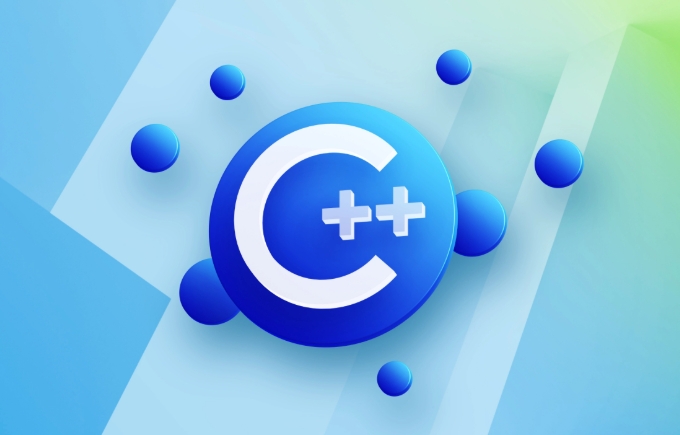The move constructor is a special constructor in C used to "steal" resources rather than copying, in the form MyClass(MyClass&& other), which transfers the resources of the temporary object to a new object by receiving an rvalue reference. 1. When writing, noexcept tags are required for safe calls from STL containers; 2. The original object resource should be empty to prevent repeated release; 3. Applicable to classes that manually manage resources (such as bare pointers), and there is usually no need to customize them when using smart pointers or standard library containers; 4. Implementation details include avoiding movement of const objects, not throwing exceptions in the function, and ensuring the correct transfer of resource state.

The core of implementing Move Constructors in C is to correctly "steal" resources rather than copying them, thereby improving performance. Especially when objects manage dynamic memory or other expensive resources, reasonable movement semantics can avoid unnecessary deep copying.

What is a moving constructor?
A moving constructor is a special constructor that receives an rvalue reference , usually in the form:
MyClass(MyClass&& other);
Its purpose is to transfer the resources of the temporary object (rvalue) to the new object, rather than copying the resources like a copy constructor. For example, when you return a local object or pass std::move(obj) , the move construct is triggered.

How to write a basic move constructor?
Suppose you have a class that manages a dynamically allocated piece of memory, then a typical move constructor is written as follows:
class MyArray {
public:
int* data;
size_t size;
// Move constructor MyArray(MyArray&& other) noexcept {
data = other.data;
size = other.size;
// Put the original object's pointer empty to prevent repeated release of other.data = nullptr;
other.size = 0;
}
};Key points:

- Use
noexceptto tag the move constructor so that the STL container knows that it can be moved safely instead of copying. - "empty" the original object's resources to prevent repeated release of memory during destruction.
When should I achieve it myself?
The compiler generates a move constructor by default, but it is only valid if:
- The class does not explicitly define a copy construct, copy assignment, move assignment, or destructor;
- All class members support mobile operations.
If you manage resources manually (such as bare pointers, file handles, etc.), you need to implement the move constructor yourself to avoid shallow copying problems.
Otherwise, if you use smart pointers (such as unique_ptr , shared_ptr ) or standard library containers (such as vector , string ), you usually don't need to customize the move constructor because these types already have efficient move semantics built in.
Details to be paid attention to when implementing
- Don't forget to empty the resource pointer of the original object : otherwise it may cause double release during destruction.
- Try to mark
noexcept: STL containers will use the move constructor first when reallocating memory, provided that it isnoexcept. - Avoid moving constant objects : The
constobject cannot be moved, because the move operation usually modifies the original object. - Don't throw exceptions in the move constructor : unless you have special needs, make sure it is exception-free.
Basically that's it. Implementing a moving constructor is not complicated, but it is easy to ignore some details, such as whether you really need to customize, whether you want to empty the original object state, whether you have noexcept missing, etc. As long as you understand the core idea of "resource transfer", you can write efficient and safe code.
The above is the detailed content of How to Implement Move Constructor in C. For more information, please follow other related articles on the PHP Chinese website!

Hot AI Tools

Undress AI Tool
Undress images for free

Undresser.AI Undress
AI-powered app for creating realistic nude photos

AI Clothes Remover
Online AI tool for removing clothes from photos.

Clothoff.io
AI clothes remover

Video Face Swap
Swap faces in any video effortlessly with our completely free AI face swap tool!

Hot Article

Hot Tools

Notepad++7.3.1
Easy-to-use and free code editor

SublimeText3 Chinese version
Chinese version, very easy to use

Zend Studio 13.0.1
Powerful PHP integrated development environment

Dreamweaver CS6
Visual web development tools

SublimeText3 Mac version
God-level code editing software (SublimeText3)

Hot Topics
 What is high-frequency virtual currency trading? The principles and technical implementation points of high-frequency trading
Jul 23, 2025 pm 11:57 PM
What is high-frequency virtual currency trading? The principles and technical implementation points of high-frequency trading
Jul 23, 2025 pm 11:57 PM
High-frequency trading is one of the most technologically-rich and capital-intensive areas in the virtual currency market. It is a competition about speed, algorithms and cutting-edge technology that ordinary market participants are hard to get involved. Understanding how it works will help us to have a deeper understanding of the complexity and specialization of the current digital asset market. For most people, it is more important to recognize and understand this phenomenon than to try it yourself.
 Explain RAII in C
Jul 22, 2025 am 03:27 AM
Explain RAII in C
Jul 22, 2025 am 03:27 AM
RAII is an important technology used in resource management in C. Its core lies in automatically managing resources through the object life cycle. Its core idea is: resources are acquired at construction time and released at destruction, thereby avoiding leakage problems caused by manual release. For example, when there is no RAII, the file operation requires manually calling fclose. If there is an error in the middle or return in advance, you may forget to close the file; and after using RAII, such as the FileHandle class encapsulates the file operation, the destructor will be automatically called after leaving the scope to release the resource. 1.RAII is used in lock management (such as std::lock_guard), 2. Memory management (such as std::unique_ptr), 3. Database and network connection management, etc.
 C vector get first element
Jul 25, 2025 am 12:35 AM
C vector get first element
Jul 25, 2025 am 12:35 AM
There are four common methods to obtain the first element of std::vector: 1. Use the front() method to ensure that the vector is not empty, has clear semantics and is recommended for daily use; 2. Use the subscript [0], and it also needs to be judged empty, with the performance comparable to front() but slightly weaker semantics; 3. Use *begin(), which is suitable for generic programming and STL algorithms; 4. Use at(0), without manually null judgment, but low performance, and throw exceptions when crossing the boundary, which is suitable for debugging or exception handling; the best practice is to call empty() first to check whether it is empty, and then use the front() method to obtain the first element to avoid undefined behavior.
 How to develop AI-based text summary with PHP Quick Refining Technology
Jul 25, 2025 pm 05:57 PM
How to develop AI-based text summary with PHP Quick Refining Technology
Jul 25, 2025 pm 05:57 PM
The core of PHP's development of AI text summary is to call external AI service APIs (such as OpenAI, HuggingFace) as a coordinator to realize text preprocessing, API requests, response analysis and result display; 2. The limitation is that the computing performance is weak and the AI ecosystem is weak. The response strategy is to leverage APIs, service decoupling and asynchronous processing; 3. Model selection needs to weigh summary quality, cost, delay, concurrency, data privacy, and abstract models such as GPT or BART/T5 are recommended; 4. Performance optimization includes cache, asynchronous queues, batch processing and nearby area selection. Error processing needs to cover current limit retry, network timeout, key security, input verification and logging to ensure the stable and efficient operation of the system.
 C bit manipulation example
Jul 25, 2025 am 02:33 AM
C bit manipulation example
Jul 25, 2025 am 02:33 AM
Bit operation can efficiently implement the underlying operation of integers, 1. Check whether the i-th bit is 1: Use n&(1
 C function example
Jul 27, 2025 am 01:21 AM
C function example
Jul 27, 2025 am 01:21 AM
Functions are the basic unit of organizing code in C, used to realize code reuse and modularization; 1. Functions are created through declarations and definitions, such as intadd(inta,intb) returns the sum of the two numbers; 2. Pass parameters when calling the function, and return the result of the corresponding type after the function is executed; 3. The function without return value uses void as the return type, such as voidgreet(stringname) for outputting greeting information; 4. Using functions can improve code readability, avoid duplication and facilitate maintenance, which is the basic concept of C programming.
 Understanding the C ABI
Jul 24, 2025 am 01:23 AM
Understanding the C ABI
Jul 24, 2025 am 01:23 AM
C ABI is the underlying rule that the compiler follows when generating binary code, which determines mechanisms such as function calls, object layout, name adaptation, etc. 1. It ensures that different compilation units interact correctly, 2. Different compilers or versions may adopt different ABIs, affecting dynamic library links, STL transfers, virtual function calls, etc. 3. Cross-platform development, long-term system maintenance, third-party library use and other scenarios need to pay special attention to ABI consistency, 4. ABI can be controlled through macro definitions and compilation options, and use tools to view the symbol table to judge consistency.
 C std::is_same example
Jul 24, 2025 am 03:22 AM
C std::is_same example
Jul 24, 2025 am 03:22 AM
std::is_same is used to determine whether the two types are exactly the same at compile time and return a bool value. 1. In the basic usage, std::is_same::value is true when T and U are exactly the same, otherwise it is false. Different modifiers such as const, reference, pointer, etc. will cause false; 2. You can remove the type modification with std::remove_const, std::remove_reference and other types, and then compare it to achieve more flexible type judgment; 3. It is often used in template metaprogramming in practical applications, such as conditional compilation with ifconstexpr, and perform different logic according to different types; 4.






